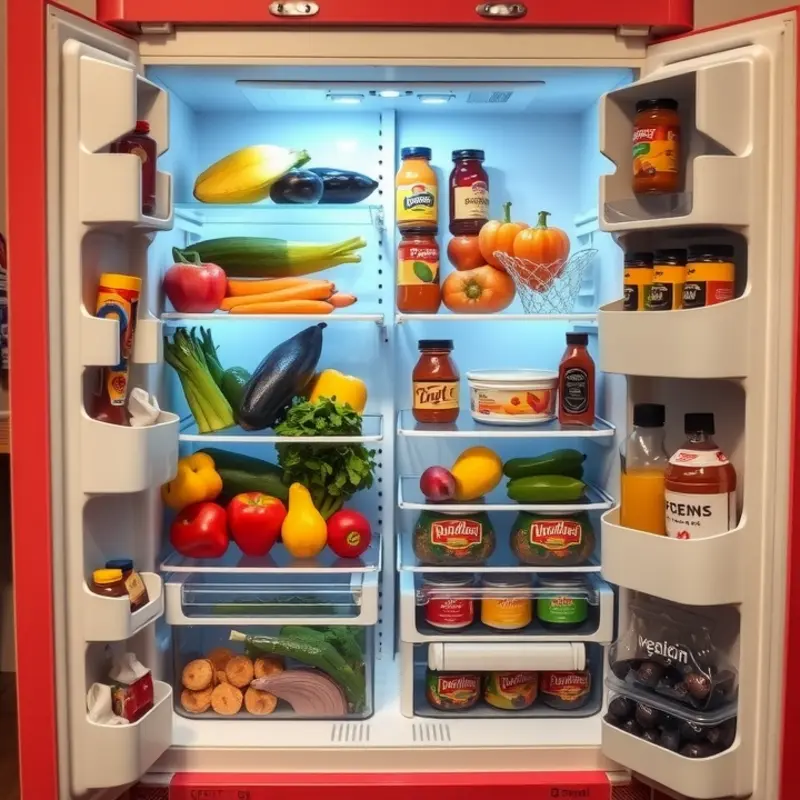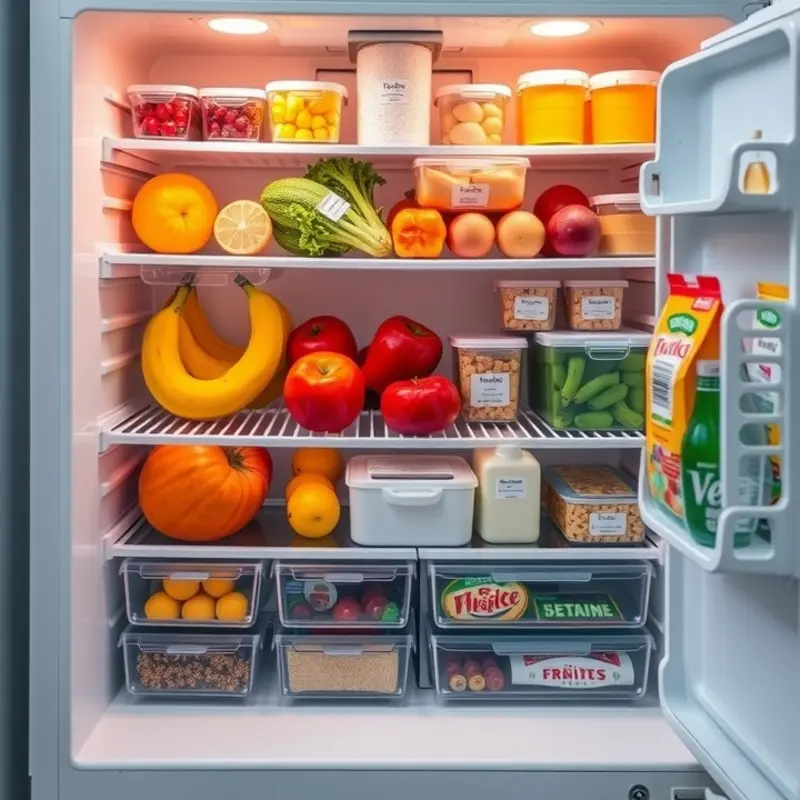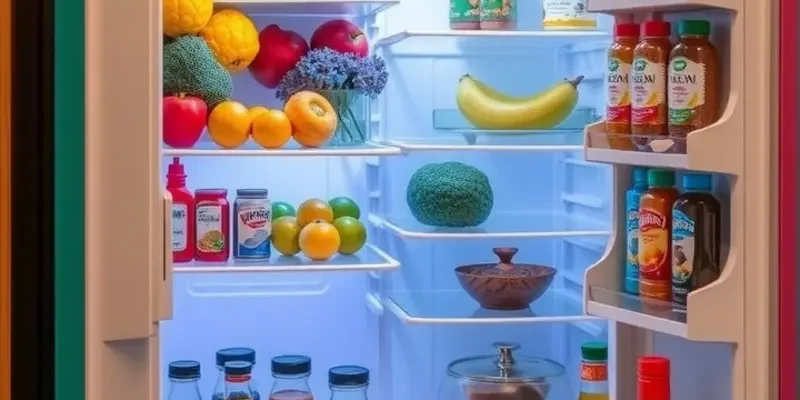If your refrigerator resembles a black hole where food goes to mysteriously disappear, it might be time to bring order to the chaos. From fresh produce to takeout boxes, sharing a fridge with roommates, significant others, or children can often feel like a game of Tetris – minus the joy of clearing rows. With limited space and various tastes at play, it’s crucial to carve out a simple system that allows each ingredient to shine and avoids surprise science experiments (that leftover lasagna may have a personality of its own by now!). Here’s the good news: organizing your apartment fridge doesn’t have to be a monumental task. With a bit of light-hearted planning and a dash of creativity, we can turn that cluttered cold box into a delightful display of food ready to nourish you and yours. Get ready for some practical, enjoyable hacks to get you started!
Fridge First Steps: Declutter & Assess

Embrace the journey of transforming your refrigerator into an organized retreat. The initial step is one you might not have expected: decluttering. It may feel daunting at first to peer into that abyss, but with a bit of strategy, you’ll emerge victorious.
Start by taking everything out of the fridge. Yes, everything. Shift those forgotten jars and mysterious leftovers your other hands usually avoid. Wipe down shelves and drawers as you work, giving your fridge a fresh physical reset—it’s your blank canvas!
With all items laid out in front of you, it’s time to make those critical decisions. What merits a place in the new, organized fridge? Begin by evaluating expiration dates. Anything past its prime belongs in the trash; no regrets, just benedictions for the space restored. Cross-check your condiments next. Despite appearances, they do expire or lose potency over time.
Once you’ve discarded expired items, it’s time to examine usability and frequency. Items that don’t see consistent use but aren’t ready for the bin can be repositioned. Perhaps on a door shelf or in a secondary spot that doesn’t impede daily retrieval of essentials.
Now for organization—the delightful territory of food placement. Consider the variability in temperature within different fridge zones. Top shelves often house leftovers poised for quick grabs. Middle shelves are optimal for dairy and eggs, with stable temperatures prolonging their freshness. Bottom shelves are ideal for raw meats, minimizing risk should they drip. Be sure to opt for sealed containers–this could be the push to explore those DIY airtight storage solutions over at apartment-friendly DIY cleaning products.
Drawers are the natural habitat for produce. Different fruits and vegetables thrive in specific humidity levels, so leverage those adjustable settings if your fridge has them. High humidity favours leafy greens—a salad will reward your efforts with a crisp crunch rather than wilted leaves.
Lastly, contemplate the availability of refrigerator space itself. If your apartment fridge is more micro than mighty, you might consider offloading bulkier items like beverages or condiments to a pantry. For urbanites, embracing an age-old tactic – frequent and mindful shopping – may further keep clutter at bay.
By introducing a regular assessment routine, end-of-week or fortnightly perhaps, maintain a clutter-free fridge. Before your next grocery run, glance through current contents. This prevents overbuying, strengthens meal planning, and above all, upholds your newly found fridge paradise.
These initial steps in fridge organization lay the foundation for ongoing maintenance. Reinforce new habits in the next chapter as we explore creative use of baskets and containers to optimize space further and uphold this newfound order.
Creative Organization Hacks: Zones and Containers

To transform your refrigerator into an organized masterpiece, start by embracing the zones method. This technique is about dividing your fridge into specific areas, where each zone has a designated purpose. Imagine your fridge as a departmental store, with each section representing different categories like produce, dairy, and condiments.
Start by dedicating the upper shelves to ready-to-eat foods. These shelves are perfect for leftovers, drinks, and snacks. Since this area is more accessible, it’s handy for items that need to be grabbed quickly. Move down to the middle shelves, which cater to perishables such as dairy and deli products. The temperature here is consistent, making it ideal for extending the shelf life of these items.
The lower shelves suit raw ingredients. Here, meats, poultry, and seafood find their home as the cooler temperature ensures they remain safe. However, always ensure these items are stored in leak-proof containers to prevent cross-contamination. Drawers, often the most ignored space, are your best bet for storing fruits and vegetables. Use one drawer for fruits and another for veggies to maximize their freshness and avoid unpleasant mushy mixes.
Containers are the key partners in this organizational journey. Opt for stackable containers that not only save space but also streamline the look of your fridge. Clear containers are preferable since they allow you to see what’s inside at a glance, reducing the need to open and disturb items constantly. Ensure all containers are airtight to avoid odor mixing and maintain freshness.
Beyond the traditional containers, consider creative alternatives like glass jars for leftovers. These jars are not just aesthetically pleasing but also help in portion control and reduce food waste. Another smart hack is using egg cartons to store condiment bottles upside down. This not only makes them easily accessible but also conserves space.
Labels make everything better. Use them liberally to categorize items. This technique offers clarity, especially for households with multiple members or if you’re sharing your space with roommates. Labels encourage accountability and ensure that everyone knows where to find what they need and where to return it after use.
Create a ‘first-in, first-out’ system to minimize waste. By placing newer products behind the older stock, you ensure older items are used up first. Pair this with a simple sheet on the fridge door listing contents and expiry dates, elevating your organizational game.
For an apartment-friendly touch, integrate small baskets and trays for grouping alike items. These fixtures can create harmony and section off areas for specific needs, like a breakfast tray with all necessary morning staples. These are particularly useful in cramped fridge spaces.
Discover more organizational ideas tailored for apartments here. Dive into the world of baskets to elevate both your fridge and overall apartment organization.
By implementing zones and harnessing the power of containers, you turn a chaotic fridge into an organized oasis. It’s not just about making the space look pretty but ensuring functionality and efficiency in your daily life.
Final words
Celebrating fridge organization is not just about tidiness; it’s about enhancing the joy of cooking, eating, and sharing meals with those you love. Remember, the kitchen is often the heart of the home! From heartfelt dinners to spontaneous midnight snacks, having a clutter-free fridge can make your culinary adventures a breeze. So seize the day (and those Tupperware leftovers), and don’t overlook the power of a well-stocked and organized fridge. Enjoy your fresh finds and keep your culinary pursuits juicy and delightful!









